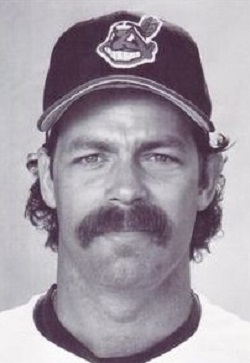Doug Jones Stats & Facts
Doug Jones
Position: Pitcher
Bats: Right • Throws: Right
6-3, 195lb (190cm, 88kg)
Born: June 24, 1957 in Covina, CA
Draft: Drafted by the Milwaukee Brewers in the 3rd round of the 1978 MLB January Draft-Regular Phase from Central Arizona College (Coolidge, AZ).
High School: Lebanon HS (Lebanon, IN)
Schools: Central Arizona College (Coolidge, AZ), Butler University (Indianapolis, IN)
Debut: April 9, 1982 (14,579th in major league history)
vs. TOR 1.0 IP, 0 H, 0 SO, 0 BB, 0 ER
Last Game: September 29, 2000
vs. TEX 1.0 IP, 1 H, 0 SO, 0 BB, 0 ER
Full Name: Douglas Reid Jones
Nicknames: Mild Thing
View Player Info from the B-R Bullpen
View Player Bio from the SABR BioProject
Nine Players Who Debuted in 1982
Tony Gwynn
Wade Boggs
Julio Franco
Willie McGee
Tony Phillips
Don Mattingly
Frank Viola
Doug Jones
Kevin Bass
Notable Events and Chronology for Doug Jones Career
Doug Jones
Jones toiled in the minors for close to a decade before making it onto a full-time major-league roster at the age of 30. Though his father was a racecar driver, Jones preferred more leisurely speeds, utilizing slow change-ups and an assortment of other pitches to establish himself as one of the more dependable relievers in the game. Over 14 years of major-league service, he recorded 20-plus saves eight times while playing for seven different teams.
After spending seven years in the Milwaukee Brewers organization battling shoulder problems, Jones signed with the Cleveland Indians as a minor-league free agent in April 1985, and worked his way into the majors by the next year. He made the most out of his limited time from the pen, notching a respectable 2.50 ERA for the Tribe in the final months of the season.
In 1987, Jones came up to the bigs in the second half of the season and came to stay this time. With a new austere attitude befitting a closer, and a new pitch — the circle change — under his belt, he became the Indians’ full-time closer by 1988. He became one of baseball’s elite relievers that year, breaking the Indians record for saves in a season with 37.
Like his name, there was nothing fancy about Jones. He went out to the mound armed with his predictable but tricky changeups and above-average fastball, and got the job done. The mustachioed reliever converted a high percentage of his save opportunities, at one point setting a major league mark by recording saves in 15 consecutive appearances. Between 1988 and 1990, Jones averaged just over 37 saves a year.
After struggling in 1991, Jones wasn’t offered a contract for the next season, but signed with the Houston Astros in January 1992. In the Astrodome, the closer made the Tribe pay for their hasty dismissal of him with his best season, notching 36 saves with a 1.85 ERA and 93 strikeouts in 111 2/3 innings. He also came in second to Lee Smith by just one point in the National League Rolaids Relief Man Award voting.
His ERA ballooned by almost three runs the next year, and the Astros traded him along with Jeff Juden to the Philadelphia Phillies in exchange for Mitch Williams in December 1993. Jones redeemed himself in 1994, recording 27 saves with a 2.17 ERA, and the win at the All-Star Game, his fifth appearance at the Midsummer Classic. At the end of the season, Philadelphia opted not to sign him to a multi-year contract, and Jones left as a free agent.
Thus started the rent-a-fireman portion of Jones’ career. As he traveled from the Phillies to the Baltimore Orioles, Chicago Cubs, Brewers, back to the Indians, and finally to the Oakland Athletics, Jones and his slow changeups succeeded in varying degrees. With each team, Jones showed glimpses of his reliability, but poor outings often relegated him to middle relief.
He did have one more stellar season in Milwaukee, where he posted 36 saves and a 2.02 ERA in 1997; however, much as they did from 1992 to 1993, Jones’ stats ballooned the following year. His ERA increased up by three as his save total decreased by 24.
As a setup man for Billy Taylor with the A’s, Jones had one last shot to establish himself as a closer when Taylor was traded to the New York Mets mid-season. But after blowing a couple of saves in August, he lost the job to Jason Isringhausen in September 1999.
After one more year out of the pen for the A’s, Jones retired with 303 saves on December 7, 2000 at the ripe age of 43. He candidly admitted that he “was ready to retire last year…or five years ago.”
@ET-DC@eyJkeW5hbWljIjp0cnVlLCJjb250ZW50IjoicG9zdF90YWdzIiwic2V0dGluZ3MiOnsiYmVmb3JlIjoiTGVhcm4gTW9yZSBhYm91dCB0aGUgdGVhbXMsIHBsYXllcnMsIGJhbGwgcGFya3MgYW5kIGV2ZW50cyB0aGF0IGhhcHBlbmVkIG9uIHRoaXMgZGF0ZSBpbiBoaXN0b3J5IC0gLSAtIC0gLSAtIC0gIiwiYWZ0ZXIiOiIiLCJsaW5rX3RvX3Rlcm1fcGFnZSI6Im9uIiwic2VwYXJhdG9yIjoiIHwgIiwiY2F0ZWdvcnlfdHlwZSI6InBvc3RfdGFnIn19@
Factoids, Quotes, Milestones and Odd Facts
Coming soon
Other Resources & Links
Coming Soon
If you would like to add a link or add information for player pages, please contact us here.



